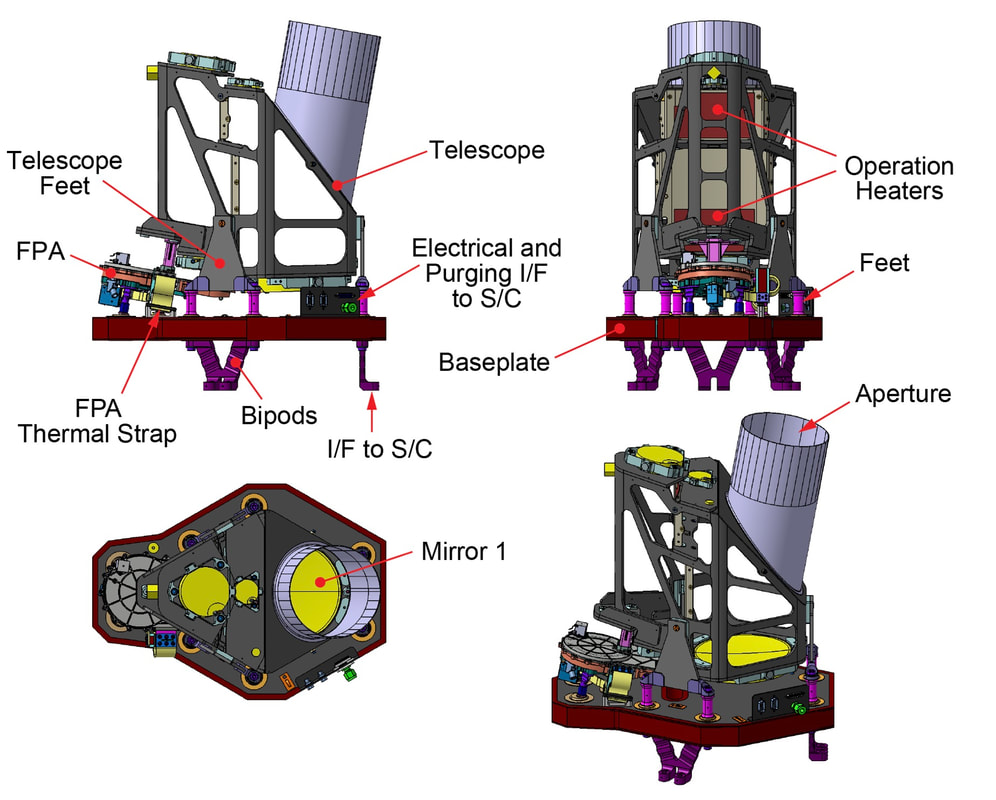CoCa
CoCa (Comet Camera) is the imaging system on Spacecraft A and is provided by a consortium led by the University of Bern in Switzerland including DLR Adlershof, LAM Marseille, the Konkoly Thege Miklos Astronomical Institute Budapest and their industrial partners. It is designed to provide high resolution imaging of the nucleus of the selected comet in 4 filters at selected broadband optical wavelengths.
In order to meet the deadlines of an F-class mission, it was decided not to build a new instrument from scratch, but to build CoCa based on the stereographic camera Colour and Stereo Surface Imaging System (CaSSIS) on the ExoMars TGO, which was also de- veloped at the University of Bern. The focal plane assembly remains similar to CaSSIS but the filter-wheel has been added.
CoCa uses a CMOS sensor with 1504 × 2000 pixels and a pixel size of 49 μm2. Common practise for cameras used in space is to change the filter in front of the sensor with a filter-wheel. To provide high performance at low cost, it relies on designs successfully developed for previous flight programs. For a 1000 km fly-by, CoCa will provide 8 m per pixel images at a repetition frequency of 1 image per second. CoCa will therefore provide the highest quality imaging of the surface and the dust in the near-nucleus environment over a range of phase angles. The system is constructed to provide over 2500 images during the fly-by for subsequent downlink and can allow saturation on the nucleus to provide optimum signal-to-noise on the dust coma at all times through the fly-by. The optics of CoCa are protected from high velocity dust impacts by the Rotating Mirror Assembly (RMA) that will be provided by CSL in Liege and Thales-Alenia Space Switzerland.

